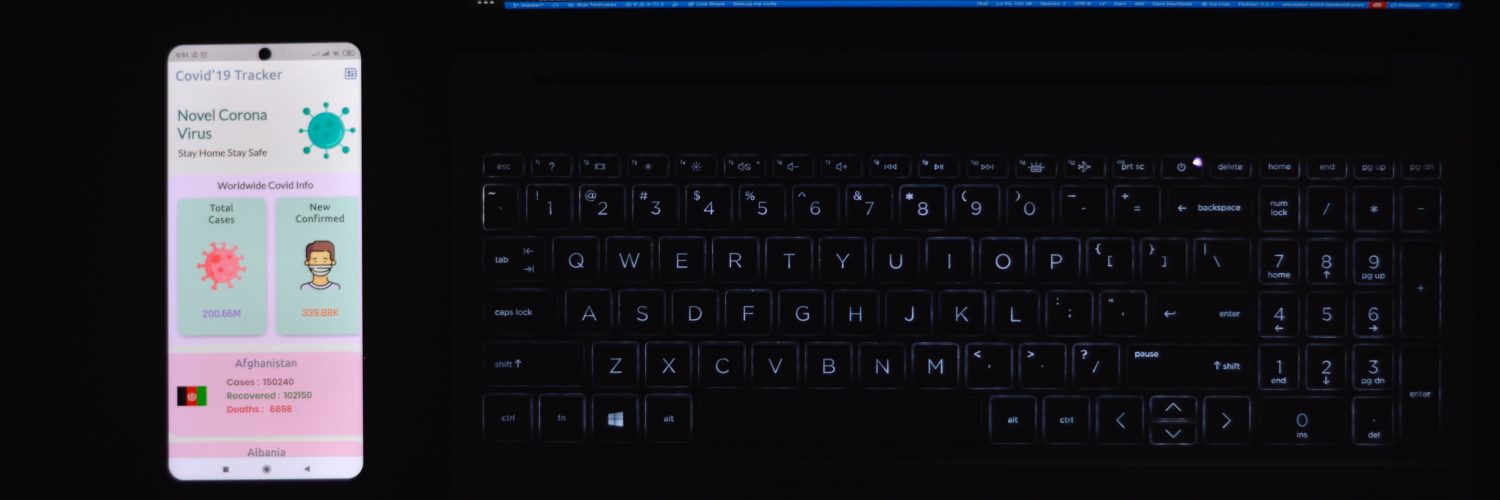Flutter is gaining popularity for developing multi-platform apps. State management is one of the most crucial aspects of developing Flutter apps.
What’s State?
In Flutter, a state refers to the data that can change during the lifetime of the widget. Flutter uses a reactive programming model where the user interface is rebuilt whenever the state changes. It means whenever the application state changes, Flutter rebuilds the UI.
Why do we need state management libraries?
Every app has to share data and variables across the app in Flutter. To keep track of the various pieces of data that are used by an application, the Flutter state management library helps you manage app data and change in states.
In Flutter, there are two states in an application.
1. Ephemeral state
It’s the local state ( i.e UI state ) that holds a particular state inside the Stateful widget, and is associated with a single widget and always placed inside the state class. You can manage the ephemeral state using the setState method. In simple words there is no need to use state management solutions like (BLoc, Provider etc).
E.g –
1.Checkbox value
2.Current percentage of Loading indicator.
2. App State
When your state variables are outside of the Stateful widget, it’s known as App state. because it needs to be shared throughout the application.
E.g – Cart Data
For managing the app state, you have to use a state management solution (inherited widget or third-party library).
Here are the most popular libraries used to manage app state in a Flutter:
1. Inherited Widget
2.Flutter_bloc
3. Provider
4. Flutter_riverpod
5. GetX
1. Inherited Widget
Flutter framework offers an Inherited Widget to simplify the application state. It’s a base class for widgets that efficiently propagate information down the tree. It works by telling registered build references when a change occurs.
Pros:
Good for small and medium size projects
Provides a simple and efficient way to share data to the widget tree
Cons:
Requires a bit of setup and more boilerplate code
Can become difficult to manage and scale for large projects
2. Flutter_bloc
Bloc (Business Logic Component) pattern is the most popular approach. As the name suggests that it separates business logic from presentation. It uses streams to manage states and can be a good approach for building complex applications.
Pros:
Clear separation between UI and business logic
Provides a stream-based architecture
Can be used for complex apps with large state requirements
Cons:
Difficult for beginners & requires learning a new paradigm
Requires boilerplate code and complexity for small apps or projects
This can result in performance issues if not implemented correctly
3. Provider
Provider package is a wrapper around inherited widgets. It’s a very simple and lightweight and flexible state management library to share the data around the application efficiently.
So behind the scenes, the provider uses an inherited widget to parse the data down to the widget tree. If you want to use an inherited widget you can have more benefits of this package.
The basic concept of a Provider is that a Provider object can hold a value and provide it to any widget that needs it. Provider package can use a provider with a state object such as ChangeNotifier, ValueNotifier, etc.
Pros:
A simple and intuitive way to manage the state across the widget tree
Can be used with any architecture
Good for small to medium-sized apps with moderate complexity
Cons:
Can become difficult to manage and scale for large apps with a complex UI
May result in performance issues if not used carefully
Requires some setup and boilerplate code
4. Flutter Riverpod
Riverpod library was developed by the same author who developed the provider package. It’s a reimplementation of the inherited widget that is simple and easy to use.
It is based on the Provider package and provides an improved and more efficient way of managing the state of a Flutter app. Riverpod uses the concept of providers to manage the state of an app. Providers are the most important part of a Riverpod application. A provider is an object that encapsulates a piece of state and allows listening to that.
Pros:
Uses the concept of providers to make it easy to share data between widgets
Provides a variety of provider types that can handle different kinds of state management use cases
Uses lazy loading and memoization to optimize performance by only updating state when necessary
Provides a testable and scalable architecture for building complex Flutter apps
Provides good documentation and examples, making it easy for developers to learn and use
Cons:
It can have a steep learning curve for developers who are new to state management and the Provider pattern
It requires a good understanding of the Flutter widget lifecycle to use effectively
As it is a relatively new library, it may be subject to frequent changes, which could make it challenging to maintain codebases over the long term
5. Getx
Getx is a lightweight and simple-to-use Flutter state management library. It’s the best library for beginners to use and manage the app state.
It’s a powerful and robust miniature framework you can also perform dependency injection using Getx.
Pros:
It is lightweight and fast.
GetX provides a simple way to manage the state in a Flutter app, using reactive programming. It uses an observable pattern to track changes in the app’s state and update the UI accordingly. This allows developers to update the UI in real time.
GetX provides a simple and efficient way to handle navigation in a Flutter app.
GetX provides a lightweight and efficient way to handle dependency injection in a Flutter app.
GetX provides detailed documentation and examples, making it easy for developers to learn and use. It also has strong community support, with active contributors and regular updates.
Cons:
Limited documentation
Not used widely as some other state management libraries, such as Provider and Riverpod. This means that some developers may not be as familiar with it and may be less likely to adopt it.
GetX is maintained by a single developer, and the development is dependent on the availability of that individual. This may make some developers hesitant to use it, as it may not be as reliable as state management libraries maintained by larger teams.
Conclusion
In this article, we talked about the most popular libraries used to manage the state of the Flutter app and their pros and cons.
Choosing state management libraries totally depends on app requirements and the complexity of the app. You can choose any one of them according to the needs of your applications.






Add comment